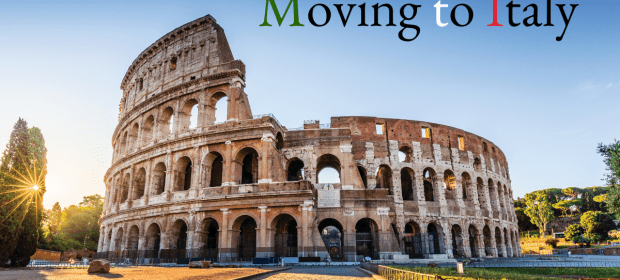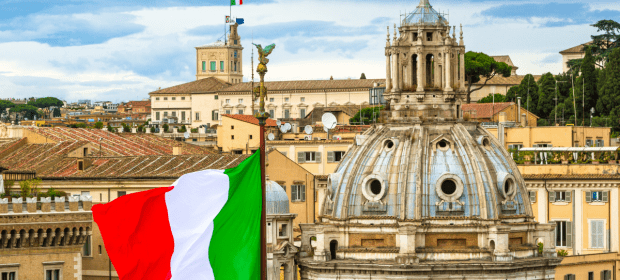Trust consultation document
Anyone who has listened to one of my early podcasts on the subject will know that trusts are a thorny issue for Italian residents – they are formally recognised, thanks to the fact that Italy ratified The Hague Trust Convention, which came into force in 1992 – but from there it has been a constant source of trouble, mainly relating to how they should be taxed. Anyone who has any kind of link with a trust should make sure that they get a working idea of its potential consequences from the Italian point of view. I say “potential”, because there isn’t a great deal of clarity on the subject. The only thing for sure is that the Agenzia is taking a greater interest in these structures – hence the recent publication of a consultation document that seeks to give a cohesive vision of trusts in the Italian context.
You can expect some changes before it becomes definitive, but I am summing up its main points in a series of questions you should be asking yourself (and your advisers) if you have any kind of connection to a trust.
Is the trust itself Italian resident?
- The fact that a trust has been set up outside of Italy doesn’t mean that the Agenzia cannot consider it to be an Italian resident (the same is also true of company structures)
- The consultation document indicates that the basic criteria upon which a trust will be considered resident in Italy are the location of its registered office, its centre of administration, or its principal activities
- There is a simple presumption of Italian residency for any trust that has at least one settlor and one beneficiary resident in Italy
- A presumption of Italian residency also exists when an Italian resident individual transfers assets to a trust set up in a non-white list country
- An Italian-resident trust is taxed at IRES rates (Italian corporate taxation) regardless of when distributions are actually made to the beneficiaries
What kind of trust is it (regardless of its residency)?
- The consultation document discusses two types of trust: “opaco” and “trasparente”, with the distinction essentially being whether or not the beneficiaries have the right to receive distributions from the trust (trasparente), or are only amongst those for whom it is a possibility, but not a right (opaco). In simpler terms, we might call the “opaco” a discretionary trust and the “trasparente” a naked, or transparent trust
- If you are the beneficiary of a naked trust, essentially you will be taxed on a “look-through” basis, as if the trust didn’t exist. This will involve the potentially difficult process of reconciling the trust’s reporting to the Italian reporting requirements for individuals
- If you are the beneficiary of a discretionary trust, you are likely to be taxed at financial income tax rates (26%) on any distributions
Is the trust set up in a tax haven or does it otherwise enjoy preferential tax treatment?
- If a discretionary trust is set up in a tax haven, or otherwise happens to enjoy a preferential tax regime, the trust’s income is automatically attributed to its Italian beneficiaries, regardless of whether the trust has actually made a distribution. You could end up paying tax on amounts you haven’t actually received
- This point follows the similar regime for companies set up in tax havens or enjoying low tax regimes
Gift/inheritance taxes
- People often set trusts up as vehicles for estate planning. One main source of doubt over the years has been the moment at which Italian gift or inheritance taxes fall due. The doubt has been created by the fact that the Italian Supreme Court (Cassazione) has oscillated between two competing interpretations
- The first interpretation is that taxes are due at the moment the trust is set up, and should be paid at appropriate rates considering the relationship between the settlor and the ultimate beneficiary. This approach was favoured by those who wanted to pay the taxes now under the relatively low Italian IHT regime, in the anticipation of higher taxes in the future
- The second interpretation is that taxes are due at the moment of final distribution to the beneficiary concerned
- Interestingly, both approaches have been applied in the Italian courts, but it seems that the second interpretation is destined to become the definitive one. This puts people who have already applied the first interpretation in something of an awkward position
Will I be subject to foreign assets declarations (IVAFE/IVIE) as a result of being considered “titolare effettivo” (beneficial owner) of the trust’s assets?
- This is quite a complicated point and is intertwined with the fact that recent reforms have made Italian resident trusts subject to foreign asset declaration rules
- In some circumstances, even the beneficiaries of foreign discretionary trusts may have to declare the assets held by the trust due to the rules relating to beneficial ownership
- The penalties for non declaration are such that, if you find yourself in a grey area, you should probably make the declaration (which is a fairly difficult thing to do properly)
Don’t underestimate the level of sophistication that the Agenzia is reaching with its interpretations of trust instruments – they can and will dig into the nature of a trust in order to understand exactly how it works and increasingly they have the expertise to do so. If you do have a connection to a trust or are thinking about setting one up, now might be a good idea to have a chat and review your situation. There are a limited number of circumstances in which they might make sense (for example in terms of protecting vulnerable individuals), but in most other cases we find that there are easier and more “Italian-friendly” ways of reaching the goals people have with their trusts.
If any of the above has raised doubts or queries, I’m always happy to hear from people by e-mail, or even just drop me a WhatsApp message and we’ll organise a time to speak.







